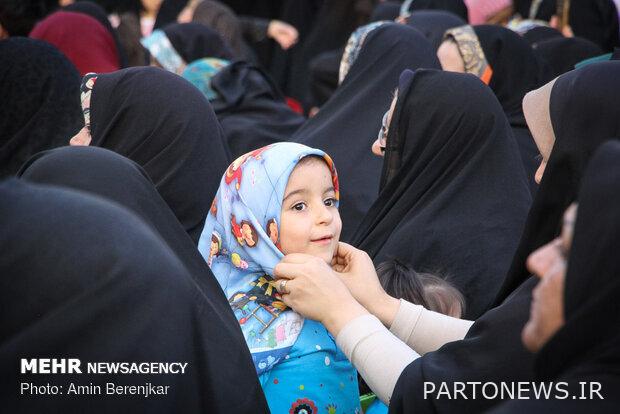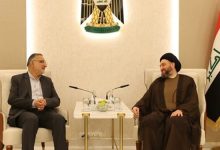hijab A product of the Islamic Republic or an identity component? – Mehr news agency Iran and world’s news

According to the Mehr News Agency, Mina Yari wrote a note titled Hijab; A product of the Islamic Republic or an identity component? has been provided to Mehr news agency for publication.
It is stated in this note: Since the early years of the revolution, the issue of hijab and how to deal with the manifestations of non-hijab has been one of the challenges facing the officials of our country. A topic that seems much more prominent in recent months than in the past. But before trying to deal with this phenomenon, it may be necessary to find its roots.
Due to the increase in the manifestations of veiling and spread In society, especially among the young generation, the methods that have been implemented so far can be viewed with doubt. Hijab is a cultural issue before it is recognized as law. Every society has many social values according to its religious and national culture. Based on their importance, these values can be turned into social norms, which are below Panhaden As an anomaly, they are not pleasing to the people of that society. Therefore, people have generally dealt with this anomaly by establishing laws.
The issue of hijab, as one of the value categories, was included in the laws from the very beginning of the formation of the Islamic government in our country. But this law is different from other laws as a cultural issue. Today, we see that the necessity of hijab is not recognized as a value in the minds of some women and girls, and this is due to insufficient work in the field of explaining the importance of this issue. If we go back in history a little, we will see that in the early years of the revolution, due to the various crises and issues that the nascent system of the Islamic Republic was facing, there was less opportunity for enlightenment in this field. From the very beginning, there were confrontations between the supporters of the hijab and its opponents, but the transformation of this cultural issue into a law and the society’s self-willed favoring of the hijab under the influence of the ideals of the Islamic Revolution pushed the matter to the sidelines, and as a result, explanations and arguments in this field did not happen for the education of the new generation. . Unfortunately, even in the years after the war, no useful effort was made for it. Even in the field of clothing design and various models of women’s clothing, there was a lack of work. Along with that, the increasing growth of the media, especially the post-revolutionary cinema celebrity breeding In the radio and the attacks of Western thought, which existed in the heart of the society since the years before the revolution, caused some to find themselves faced with many questions about religious and cultural foundations, of which hijab is the most obvious.
Perhaps the first strategic error in the field of hijab is defining it under the discourse of the Islamic Republic. If we examine the history of veiling in Iran properly, we will find that the issue of women’s veiling is not limited only to the Islamic Republic, but also to the history of Islam. Our country with history A long civilization has always had different characteristics from other societies and civilizations. In the past, hijab in Iran was considered a kind of value and a source of pride for women. Iranian women have long been known for wearing long dresses and hiding their beauty. as far as Will Durant, the author of the book History of Civilization, attributes the hijab to the whole of Iran, and in an extreme statement, even considers Islam to be influenced by Iranians’ clothing. While this natural behavior is rooted in the type of human creation that makes him different from other creatures. But what of the words Will It seems that the civilization of Iran since ancient times emphasized on covering and a kind of hijab, which was in contrast with the nudity and shamelessness of ancient Greece and Rome. Therefore, we find out that hijab in Iran is not specific to the era after the introduction of Islam.
Joseph Kent Gubino The French author also says that the hijab that is in Iran is documented in Iran before Islam before it is documented in Islam. There are many such statements and evidences in the history of covering Iranians. Perhaps it can be said that Islam has not established anything new regarding hijab, but has simply made this natural and divine issue a rule. A behavior that is mostly caused by modesty and chastity institutionalized in Iranian women’s thinking. With the arrival of Islam in Iran, there is no confrontation in this matter and Iranians accept Islam with all its laws, especially the hijab law. In fact, veiling has always been a part of Iranian woman’s identity, with which she is known and considers it a source of self-respect. So we can see that the hijab of Islam is not in our land. But we know that nudity and veiling are Farang’s souvenirs, which gradually penetrated minds from the Qajar dynasty with the trips of kings and intellectuals to Europe, and during the Pahlavi period, it was able to manifest itself in society.
But the tying of this cultural and civilizational component with the Islamic Republic system has turned it into a threat tool. Hijab, as a bastion for the Islamic system, is the target of numerous attacks under any pretext, and after each attack, a part of it is damaged. In such a way that even in civil protests in the political and economic fields, it is used as a tool to threaten the government. It is as if the hijab was one of the innovations of the revolution and was specific to it. Therefore, it seems that facing this issue should become a public discourse so that women and girls in the context of society can recover this distorted identity and not lose it with any attack and excuse.
Therefore, grammatical methods are not enough in this field and the need for clarification is felt more than ever. Today’s society faces a threat in the field of covering, but it is possible to look at this space optimistically and for the first time in this field, with the help of all available tools, including education and media, talk to the new generation and turn this threat into an opportunity for explained and revived this lost identity.

